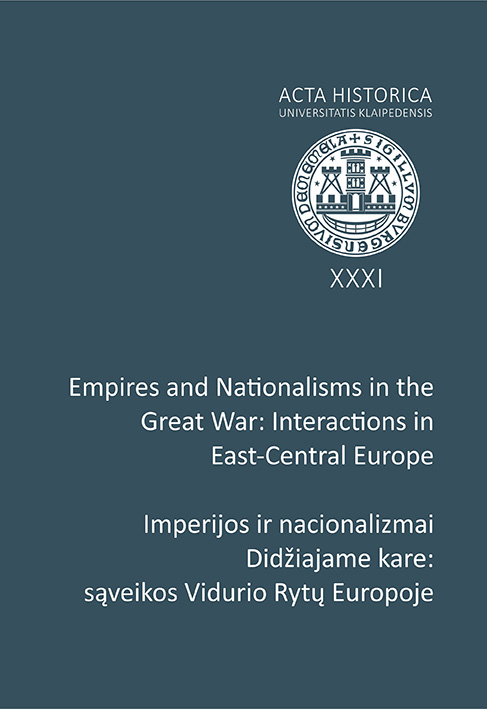Volume 31 (2015): Empires and Nationalisms in the Great War: Interactions in East-Central Europe = Imperijos ir nacionalizmai Didžiajame kare: sąveikos Vidurio Rytų Europoje, December 2015

Order by:
Pub. online: 15 Dec 2015
Type: Article
 Open Access
Open Access
Journal:
Acta Historica Universitatis Klaipedensis
Volume 31 (2015): Empires and Nationalisms in the Great War: Interactions in East-Central Europe = Imperijos ir nacionalizmai Didžiajame kare: sąveikos Vidurio Rytų Europoje, pp. 155–168
Abstract
Pub. online: 15 Dec 2015
Type: Article
 Open Access
Open Access
Journal:
Acta Historica Universitatis Klaipedensis
Volume 31 (2015): Empires and Nationalisms in the Great War: Interactions in East-Central Europe = Imperijos ir nacionalizmai Didžiajame kare: sąveikos Vidurio Rytų Europoje, pp. 171–184
Abstract
Pub. online: 15 Dec 2015
Type: Article
 Open Access
Open Access
Journal:
Acta Historica Universitatis Klaipedensis
Volume 31 (2015): Empires and Nationalisms in the Great War: Interactions in East-Central Europe = Imperijos ir nacionalizmai Didžiajame kare: sąveikos Vidurio Rytų Europoje, pp. 185–200
Abstract
Pub. online: 15 Dec 2015
Type: Interview
 Open Access
Open Access
Journal:
Acta Historica Universitatis Klaipedensis
Volume 31 (2015): Empires and Nationalisms in the Great War: Interactions in East-Central Europe = Imperijos ir nacionalizmai Didžiajame kare: sąveikos Vidurio Rytų Europoje, pp. 203–211
Pub. online: 15 Dec 2015
Type: Discussion
 Open Access
Open Access
Journal:
Acta Historica Universitatis Klaipedensis
Volume 31 (2015): Empires and Nationalisms in the Great War: Interactions in East-Central Europe = Imperijos ir nacionalizmai Didžiajame kare: sąveikos Vidurio Rytų Europoje, pp. 215–219
Pub. online: 15 Dec 2015
Type: Discussion
 Open Access
Open Access
Journal:
Acta Historica Universitatis Klaipedensis
Volume 31 (2015): Empires and Nationalisms in the Great War: Interactions in East-Central Europe = Imperijos ir nacionalizmai Didžiajame kare: sąveikos Vidurio Rytų Europoje, pp. 220–223